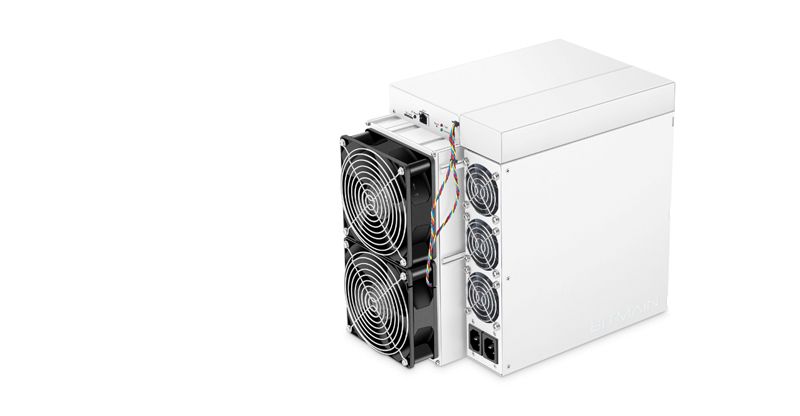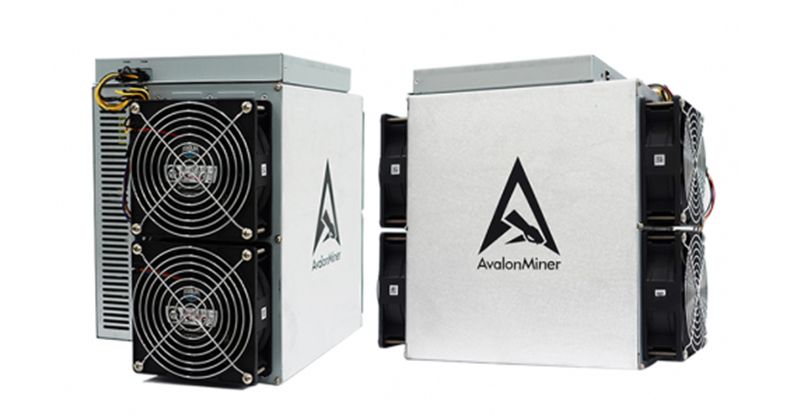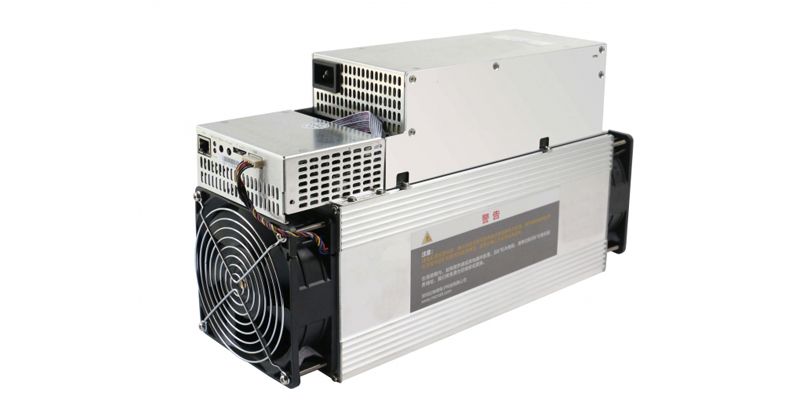Amid the global GPU shortage and expired import tariff exemptions, is it still worthwhile to get a Bitcoin mining machine? While this may depend on whether Bitcoin remains in the bullish territory or if your electricity cost is relatively cheap, it’s always prudent to overview the market and figure out the best Bitcoin miners.
Regarding cryptocurrency mining profitability, it all comes down to balancing the initial cost of the Bitcoin mining machine, its power draw, and its hash rate. Once you have these figures, using this mining calculator, it’s easy to calculate your gains based on Bitcoin’s block reward and your electricity cost. With that in mind, let’s take a look at which ASIC miner has the optimal balance.
Top 7 Bitcoin mining machines
Exploring the world of bitcoin mining, a crucial aspect of the broader DeFi and blockchain ecosystem, requires understanding the optimal equipment. Here’s an in-depth look at the top 7 bitcoin mining machines, each highlighting unique traits and efficiencies vital in the dynamic world of cryptocurrency mining.
1. Antminer S19 Pro

- Power draw: 3.25 kW
- Hash rate power: 110 TH/s
- Price tag: ~$10,000 – $19,600
Going head-to-head with M30S++, this Bitmain ASIC miner offers 29.5 J/TH efficiency. Combined with a drastically improved boot time and user experience thanks to the updated firmware, it can be considered the best Bitcoin miner on the list. Unlike M30S++, it uses a 7nm TSMC chipset, much like the latest generation of non-mining AMD Ryzen CPUs.
Unfortunately, at press time, it cannot be obtained from the manufacturer’s website due to supply chain issues, which seem to be a frequent occurrence.
2. AvalonMiner 1246

- Power draw: 3.43 kW
- Hash rate power: 90TH/s
- Price tag: $4,000 – $5,300
Chinese Canaan Creative is a well-established player in the crypto mining arena. Some would say it is the first company to offer a dedicated ASIC bitcoin mining machine since its first model in 2013. AvalonMiner 1246 is a heavy-duty mining machine, demonstrated by its four integrated fans, which ramp up to a very uncomfortable noise at 75db.
This is considered very loud traffic noise, so be prepared to have a dedicated mining space with noise isolation on the door. Nonetheless, it boasts high efficiency at 38J/TH. Additionally, it comes with a one-year warranty and integrated AI microchip. As with most ASIC miners, due to high demand, you may find it difficult to find, but first, take a look at the official manufacturer’s page.
3. AvalonMiner A1166 Pro

- Power draw: 3.4 kW
- Hash rate power: 81TH/s
- Price tag: $2,200 – $2,850
With almost equal hash rate power and power draw at twice the price, the AvalonMiner A1166 Pro is so highly sought after that it is even more difficult to acquire. This Bitcoin machine has a hash rate efficiency of 42J/TH, 4 higher than the AvalonMiner 1246. Although it still costs as much as a high-end PC, it’s a steal at that power efficiency.
Unfortunately, it appears that Canaan cut some corners to make it this affordable, as it only comes with a 180-day warranty. Also, if you are buying it directly from the manufacturer, you will have to get a minimum of 5 to get them shipped. All five would yield 405 TH/s, netting about $115 per day. It uses the same fans as the previous model, so expect the noise to be equally bothersome.
4. WhatsMiner M32-62T

- Power draw: 3.348 kW
- Hash rate power: 62 TH/s
- Price tag: $1,075 – $1,400
One of the newcomers to the mining arena launched last year, this super-affordable bitcoin mining machine uses Samsung’s 8nm chipset. Unfortunately, the latest doesn’t mean the most efficient, as you can tell from its power draw that it is comparable to AvalonMiner 1246 but 30% less efficient.
Sponsored SponsoredHowever, it is also 4–5 times less expensive than top-of-the-line ASIC miners, so it’s a solid investment if you intend to have your RoI in less than four months. It offers a 180-day warranty and comes bundled with a power supply unit. The M32 series comes in three versions, with the most expensive one yielding 66 TH/s.

5. WhatsMiner M30S++

- Power draw: 3.472 kW
- Hash rate power: 112 TH/s
- Price tag: $9,900 – $14,000
Another model from Chinese MicroBT, the M30S++, is a Bitcoin mining machine beast with the highest hash rate power available on the retail market. Surprisingly, its power draw is quite low, which means it is also one of the most efficient ASIC miners at 31 J/TH. However, with a price tag at a minimum of $10k, you need to be heavily committed to Bitcoin mining.
With a moderately priced electricity cost, you can expect an ROI within 10 to 12 months if the bitcoin price doesn’t exceed its current range ($55k – $57k). Having been released just last October, it too uses Samsung’s latest 8nm ASIC chipset.
6. Ebang EBIT E11++

- Power draw: 2 kW
- Hash rate power: 44 TH/s
- Price tag: $2,024
Chinese Ebang counts itself among the top Bitcoin ASIC manufacturers. Its latest model comes in a classic, compact, tubular design with efficient exhaust and intake fans on both sides. Its software setup is equally efficient with the “Simplify IP” setup to commence bitcoin mining directly via Ethernet quickly.
Covered by one one-year warranty (half a year for the whole machine, one for the controller), EBIT E11++ is built on a 10nm chipset. Due to its hash rate efficiency that greatly falls behind AvalonMiner A1166 Pro, it should be the last on your list if nothing else is available.
Sponsored7. Bitmain Antminer S5

- Power draw: 0.56 kW
- Hash rate power: 62 TH/s
- Price tag: ~$500
Released back in 2014, this model seamlessly integrates its mining algorithm, maintaining relevance due to its low electricity consumption and efficient hash rate of 0.51 J/GH. Additionally, its compact size at just 2.5kg and an open-top design aid in cooling. It operates with a maximum noise level of 65 dB, ideal for smaller living spaces.
What hardware do I need for Bitcoin mining?
If you already have a formidable PC, you can try transforming it into a Bitcoin mining machine at no initial cost. Just as games have a minimum system requirement to be playable, Bitcoin mining has a minimum requirement in order to be profitable:
- CPU – From Intel Celeron series
- MBO – From B250 series
- GPU – From Nvidia GTX 1070 or AMD Vega 56

If you want the best output all-in-one — workstation, uncompromised gaming, mining — for your next PC, try AMD Ryzen Threadripper 3970X. This would be considered a supercomputer not so long ago, thanks to its 32 cores and 64 threads. It also has a massive cache of 144MB and a power draw of 280W.
As far as cost-effective GPUs go for bitcoin mining, Nvidia RTX 3070 seems to be the optimal choice, if you are lucky enough to even obtain it, let alone purchase it at its original MSRP of $400.
How long does It take to mine 1 Bitcoin?
At the current bitcoin price point of $55K, a single, medium-ranged Bitcoin mining machine with 50 TH/s would be able to mine 1 BTC within one year. As you can see, we have long passed the threshold where Bitcoin mining can be effectively done at such a small scale.
Nonetheless, there is an alternative form of crypto mining, cloud mining. For example, StormGain offers a cloud mining service with which you can mine up to 0.0318 BTC daily. This is a legitimate way of mining without suspicious malware being installed on your computer or even having to have a mining rig. Otherwise, StormGain wouldn’t be a member of the Blockchain Association of the Financial Commission.
What is an ASIC miner?
In the early days of Bitcoin adoption, employing commercial GPUs for cryptocurrency mining was commonplace. While people still use that method in areas with cheap electricity, such an approach to Bitcoin mining has long outlived its cost-effectiveness.
In fact, bitcoin was originally coded to be mined by CPU power, not GPU. Only later did Bitcoin core developers decide to harness the greater hashing power of GPUs. Eventually, they were even outclassed by specialized hardware called ASIC miners, which stands for Application Specific Integrated Circuits. Any serious bitcoin mining farm now consists of ASICs. Otherwise, it couldn’t be profitable.
Which Bitcoin miner Is most profitable?
It seems that Bitcoin mining machines from BitWats are poised to be the most profitable mining rigs. Out of three, the one with the lowest price, at $5,000, reportedly has 360 TH/s at 550W power consumption.
If true, this could completely upturn the crypto mining business. In the meantime, either WhatsMiner M30S++ or Antminer S19 Pro are the most favored choices among Bitcoin miners.
How much does an ASIC miner make?
A single ASIC miner, such as AvalonMiner A1166 Pro, capable of about 81 TH/s, could make about $23 per day. Of course, this excludes the cost of the unit and ongoing electricity costs. If you are not prepared to invest in an ASIC miner outside of cloud mining with StormGain, you could also join a mining pool.
Mining pools represent coordination with fellow miners, combining computing power to add a new block. Once the block is mined, the block reward is then shared among all the pool participants. As you would expect, most mining pools can be found in China, seconded by Malta, and then in the U.S. There are several mining pools to choose from:
- Binance Pool
- Antpool
- F2pool
- ViaBTC
- Poolin
- Foundry USA
Note that the pool’s region is irrelevant to the process so that you could join a Chinese pool from the U.S. Also, remember that mining pools are different from cloud mining; as for the former, you have to have a mining rig.
“Mining rigs are becoming more affordable, largely attributed to the decrease in bitcoin’s hash price: the revenue generated per terahash of computing power.”
Colin Harper, head of content at Luxor Technologies: CoinDesk
Lastly, in the DeFi and crypto community, if an unknown Bitcoin cloud mining or pool mining website appears too good to be true, it’s likely a scam. This is a crucial consideration, especially within the realms of decentralized finance and the broader crypto community. One notable example was the BitClub Network, where three fraudsters were arrested for misappropriating $722 million worth of crypto assets. Typically, these schemes promise a share in hashing power for an initial investment, mirroring classic Ponzi schemes by also encouraging investors to recruit new members for rewards.
Which crypto-mining hardware is best for you?
Choosing the best crypto-mining hardware depends on various factors, including efficiency, cost, and living conditions. The EBIT E11++, with its 10nm chipset, falls behind in hash rate efficiency compared to others like the AvalonMiner A1166 Pro and is on the least favorable end. The Bitmain Antminer S5, though older, remains a viable choice for those with space constraints and lower electricity consumption needs, thanks to its compact size and efficient cooling design. For those deeply invested in Bitcoin mining, the MicroBT M30S++ offers the highest hash rate power on the retail market and impressive efficiency, albeit with a steep price tag. Ultimately, it’s important to DYOR (Do Your Own Research) when choosing the right crypto mining hardware for you.

